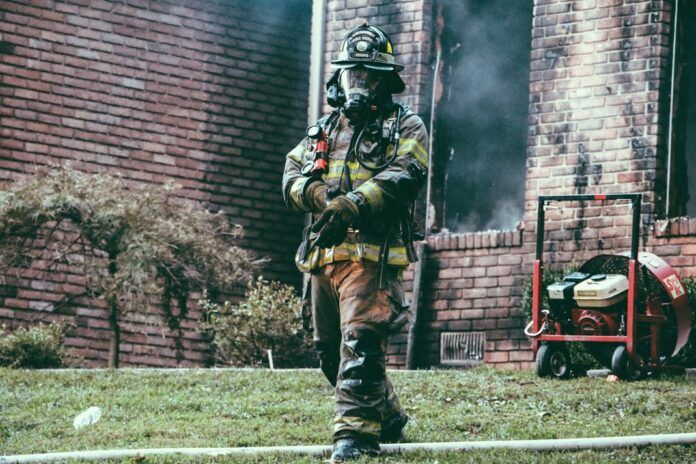Despite timber’s sustainability credentials yielding a surge in popularity, Ian King, COO of Zeroignition, examines the material’s fire-retardant chemicals’ toxicity.
The construction industry’s path to growth[1] means the resulting construction products consumption will put more strain on the environment unless a concerted effort is made now to tackle sustainability concerns. The built environment contributes a massive 39%[2] of global CO2 emissions – while a hugely significant amount, this is only part of the picture. Toxic pollution is another major threat that’s rarely considered, especially in the specification of materials and products.
To limit this environmental impact it’s essential that designers, contractors, and developers have a deep and holistic understanding of every material used in a structure. This includes fire retardants used when building with timber. Wood has seen a surge in popularity recently, replacing steel and concrete in many designs, thanks to its strong sustainability credentials, low carbon footprint and fast construction timeframes.
Despite its sustainable labelling, treated timber can, in fact, be incredibly damaging to the environment through toxic chemicals in some fire retardants. This invisible danger needs consideration. It’s essential that contractors understand and follow safety regulations and guidance, ensuring that the use of such harmful chemicals is avoided wherever possible.
Ongoing research and technological advancements are making toxic chemicals redundant, but there is a very long way to go construction becomes a greener industry, eliminating harmful fire retardants from products.
Hidden dangers of toxic fire retardants
Toxic pollution is a risk during each stage of timber production, from the manufacturing process to long after a structure is built. Noxious fumes released when treated wood burns and leeched chemicals (through rain and drainage) can cause life-threatening damage to both people and wildlife. For example, halogenated chemicals, an inexpensive ingredient in some fire retardants, can cause hormone disruptions and inhibit immune systems. This should be on a par with lower carbon emissions, as a significant environmental concern that developers should be working to combat.
The dangers of many chemicals used in contemporary fire retardants have been extensively studied, and action has been taken to phase out harmful ingredients. For instance, we have already seen Brominated fire retardants restricted across Europe. These restrictions also extend to imported goods which must have a CE mark and meet European safety, health and environmental requirements. Unfortunately, not all specified materials are free from dangerous chemicals. Legislation is still evolving, and some additives remain ingrained in manufacturing processes until appropriate replacements come to market. Moving forward, it’s clear that further research and investment are required to develop safer solutions.
Developing a deeper understanding of safety
To tackle toxic pollution effectively, industry professionals must be proactive in developing a deeper understanding of building materials. This means considering buildings as a system, closely assessing all the parts within, and analysing how they work together. Ultimately, this will help flag up any dangers.
The psychological barrier that “wood catches fire” is one of the main blockers preventing an increase in the use of timber in construction. Unprotected timber does burn, but if the latest methods to treat it with safe fire retardants are used, we can ensure its suitability for use in construction.
Fire retardants minimise the risks associated with timber building. To maximise their effectiveness, developers need to look beyond the top line and delve deeper, acknowledging the entire life cycles of materials as well as how they perform as part of a system within the building itself.
Now, the construction industry must mobilise to tackle ongoing environmental concerns. Incorporating safer materials into buildings to reduce toxic pollution is a great place to start.
What’s next for timber construction?
As a highly profit-focused industry often operating on tight margins, construction has always been averse to sudden change. However, when lives and our planet are at stake, there really is no excuse for cutting corners by using products that are both dangerous and inadequate.
Fortunately, investment in R&D across the sector is helping drive the development of non-toxic fire retardants. By spreading awareness of their capabilities, and the health and environmental benefits, specifiers can realise their potential, especially when using timber.
What we also need to see is tighter regulation that restricts the use of harmful chemicals along with further research to eliminate dangerous products and help bring safer alternatives to market.
Despite the cost, leaders in construction must put human health above convenience and profit margins. Only then can we take the vital next steps to make our industry greener and cleaner.
[1]https://www.glenigan.com/market_analysis/construction-industry-forecast/
[2] https://www.iea.org/reports/global-status-report-for-buildings-and-construction-2019




